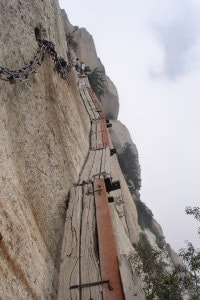Subscribe to our newsletter
Nearing the Top of the Mountain: How Mid-Career Researchers See the Publishing Landscape

Recently, I’ve been having a number of conversations with mid-career researchers about their scientific communication needs, what they want from publishers, and how they’d like to see things change.
Mid-career researchers have titles like Assistant Professor, or in some regions, they might be called Lecturers or confusingly enough, Fellows or Readers. Basically, they’re that group of academics who are no longer students or postdocs but aren’t yet fully tenured professors. While they’re not under the sorts of pressures that I talked about last year in my blog posts on the Scholarly Kitchen, mid-career researchers certainly have their own particular sets of concerns and needs.
Achieving tenure feels like the final cut on the pathway from student to fully established researcher for many academics, and it’s not hard to see why. While tenure in some places arguably offers less protection than it used to, it’s still perceived by many as the ultimate in job security. In contrast to postdocs, mid-career researchers are expected to stand on their own. This can be a great opportunity for those with good ideas, as they no longer have to struggle with the perception that somebody else is the intellectual driving force behind their work. Of course, this means that expectations are extremely high. Tenure and permanent positions in academia are not granted lightly and to be successful, researchers have to show that their work is of the highest calibre, that they are international leaders in their field, and that they are substantially advancing the interests of the institution.
In talking to this group, the things that struck me are the differences between mid-career and postdoctoral level researchers, and how those influence their scientific communication needs. Very few of them talk much about open access, and there’s much less interest in disrupting the publishing industry. What there seems to be a lot of concern about, is getting their work published in high impact journals and the necessity to do so in order to get funding and tenure. At the recent ALPSP access all areas seminar at the London Book Fair, Stephen Hill of HEFCE explained that assessment panels for the REF were explicitly told not to use impact factor as a proxy for research quality. The researchers that I’ve spoken to, however, are skeptical about how well that guideline was applied. Internationally the situation is more stark. I recently spoke to somebody who told me, under condition of anonymity, that during a European grant selection panel on which he served, the assessment of a researcher’s track record consisted almost entirely of counting how many Nature and Science papers they had authored.
Many mid-career researchers feel a sense of frustration that they need to regularly publish in highly selective, high impact publications, but those publications generally focus on articles that have broad interest across disciplines, which makes it hard to get accepted if their work is important and good science, but doesn’t necessarily have a sexy headline. To be fair, the highest impact publications are all subscription journals for historical reasons and as such have always positioned themselves as a service to readers, rather than authors. In a way, many researchers are expecting high impact subscription journals to serve a purpose that isn’t aligned with their missions.
How should publishers respond?
Many publishers are already trying to ease the pressure on researchers in need of establishing impact. Despite the apparent lack of enthusiasm for open access amongst mid-career researchers, I think that OA, or at least the associated author pays business model is helping matters. By shifting the economic power towards the author, publishers are more directly incentivized to cater to their communication needs. A good example of this effect in action is the excellent work that PLOS, Scientific Data and some society journals are doing to help researchers deposit their data (a practice which increases citation rate). I’m currently in the process of organising a pre-meeting seminar for the SSP annual conference in May that will explore this issue. Other examples of good work include the creation of cascading peer-review, which feeds pre-reviewed articles into second tier journals like Acta Neuropathologica Communications. Cascading reduces the risk of losing time by submitting to high impact journals only to be rejected, freeing researchers up to do more productive things. Add to that increasing support for altmetrics, blogs, and even videos of surgical techniques (don’t click that link during lunch), and you can see how the industry is helping.
There is, however, more that can be done to better align the expectations that many researchers have with publisher practices and to be fair, the burden shouldn’t entirely lie with publishers. The academic community has a role to play, particularly internationally, to shift it’s own attitude to what is meant by impact, particularly when participating in grant review boards and also when reviewing for journals.
Despite some great work by publishers to innovate, many academics feel like publishers are the conservative force preventing change. To me, this indicates that there isn’t enough good dialogue taking place. Publishers must reach out to academics more to better communicate why they are taking the approaches that they’re taking and to learn more about what’s needed. In turn, more researchers have to participate in the conversation about how scholarly communication must evolve to better fit the needs of researchers.



